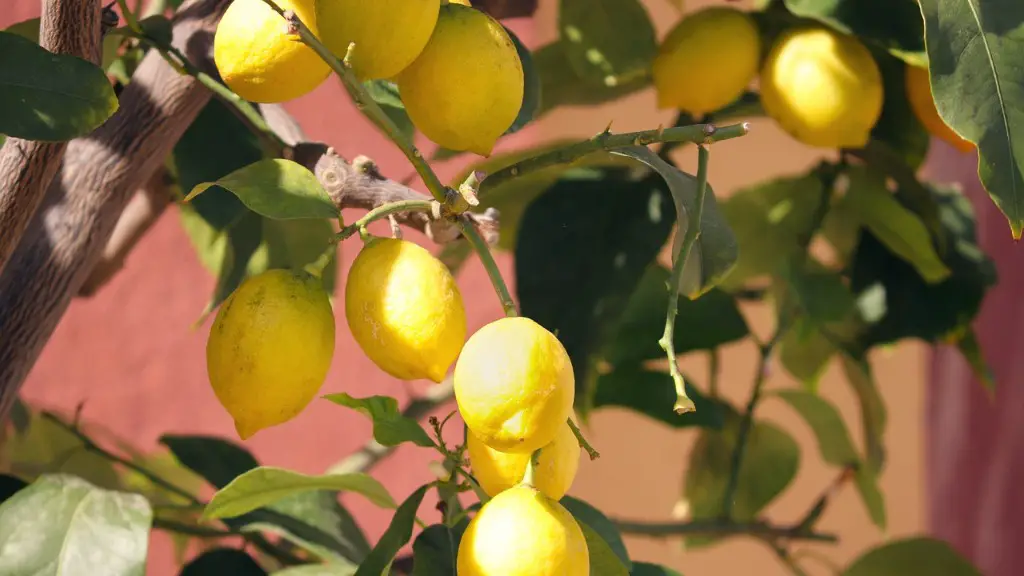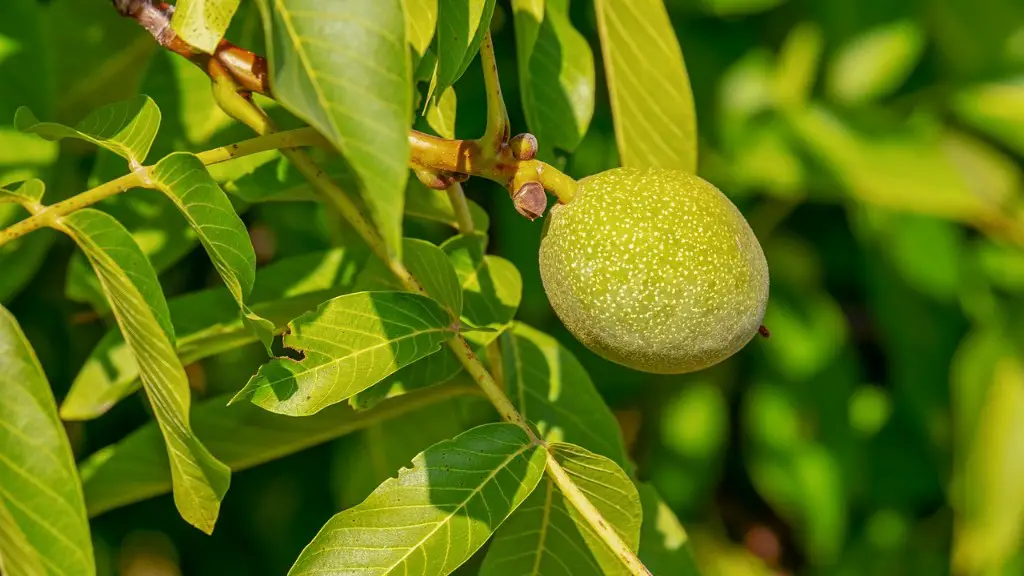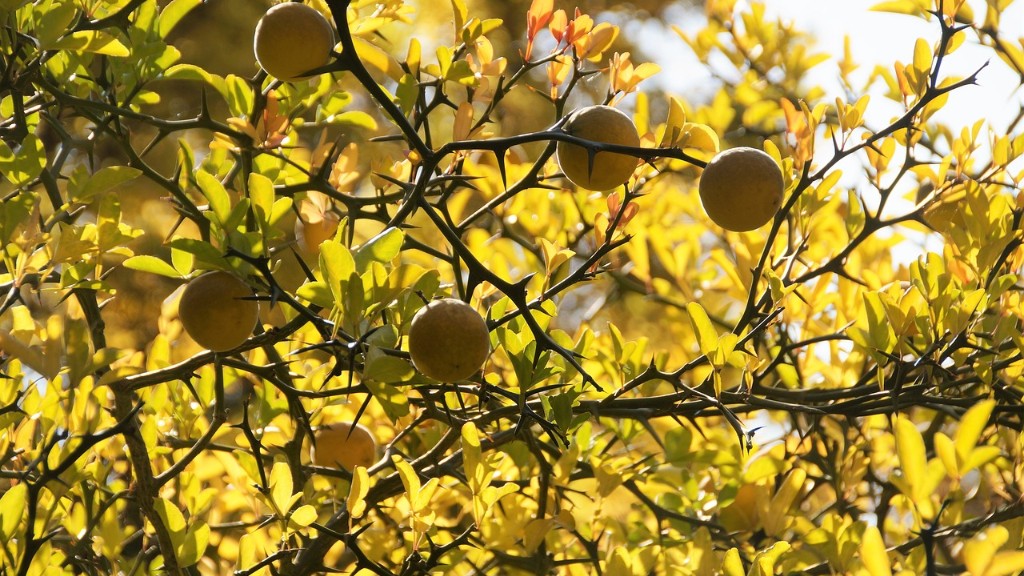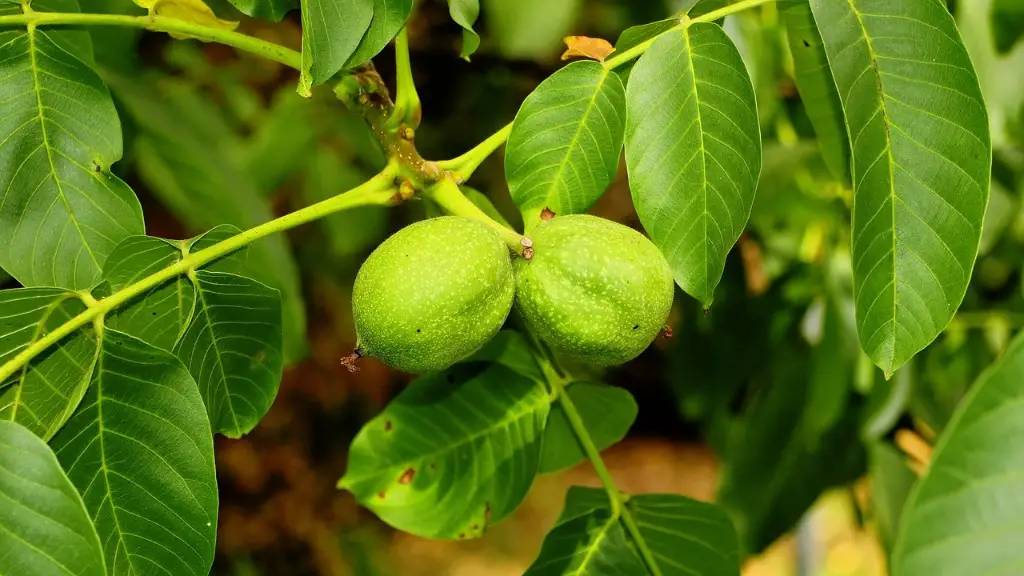Growing a healthy lemon tree is not as hard as one may think. Taking the right steps and providing the tree with all its needs can ensure a lush and vigorous growth. Here is how you can get started and make sure your tree flourves.
Firstly, it is important to select the right cultivar for your region for optimum success. Some varieties are more suitable for cooler climates, while others thrive in warmer climates. The tree can be planted either in the ground or in a large pot or planter. Be sure that the soil has good drainage to prevent root rot, and add some organic compost to provide essential nutrients.
The tree needs to be exposed to 6-8 hours of sunlight a day, and watered regularly, making sure not to over-water. Pruning is also important, as it helps to manage the size and shape of the tree, and encourages new growth. Also, to protect the tree from cold temperatures, apply a thick layer of mulch around the trunk and roots during the winter months.
Fertilizing is crucial when it comes to lemon trees – you should apply a balanced fertilizer every few months, making sure not to over-fertilize. Additionally, look out for any pests and diseases – they can easily damage the tree and obstruct its growth. Treat infestations or infections as soon as possible to keep your lemon tree healthy.
Finally, harvesting your lemons is an important part of the tree care cycle. When the fruits are ripe, they should be picked to maintain the health of the tree and maximize the yield. In order to ensure a continuous supply of lemons, consider planting more than one tree, as some varieties may not bear fruit every year.
Picking the Right Cultivar
When it comes to choosing the right cultivar for your lemon tree, there are a few things to consider in order to find the best fit for your region. For example, if you live in a cooler climate, then Eureka and Lisbon cultivars are good options as they can withstand cold temperatures and will grow to a reasonable size. On the other hand, Meyer’s lemon trees will do better in warm climates and their smaller size makes them suitable for container gardening.
Additionally, Meyer lemon trees require less pruning, whereas Lisbon and Eureka lemon trees need to be pruned often to maintain their size and shape. As such, choosing the right cultivar is essential to successfully growing a lemon tree, so it is important to make an informed decision.
Soil Preparation
Before planting a lemon tree, it is important to prepare the soil to ensure the best chance of success. Firstly, make sure that the soil has good drainage, as water-logged soil can cause root rot, which can damage and kill the tree. Adding a mix of organic compost, peat moss, and other soil amendments can improve the quality of the soil and provide the trees with essential nutrients.
It is also important to add lime to lower the pH levels of the soil, as lemon trees thrive in soil with a pH between 6.0 and 7.0. If the soil is too acidic or alkaline, the tree will not get the essential nutrients it needs, and will suffer as a result.
Sunlight and Watering
Lemon trees prefer full sun, so the tree should be exposed to between 6 and 8 hours of sunlight a day to maximize its productivity and health. When it comes to watering, keep an eye on the moisture levels of the soil, and water regularly but be careful not to over-water – lemon trees can become stressed with too much water.
Pruning and Mulching
Pruning is an important part of a lemon tree’s care routine, as it helps to promote healthy growth and a good yield. Pruning is best done in the winter months when the tree is dormant, as it helps to keep its size and shape under control. Make sure to prune away any dead branches, and train the new shoots accordingly.
Mulching is also an important part of lemon tree care. When the temperature drops during the winter months, it is important to apply a thick layer of mulch around the tree’s trunk and roots to protect it from the cold and insulate it from the ground. This will protect the roots and keep the soil moist.
Fertilizing and Pest Control
It is important to fertilize the lemon tree regularly to boost its health, nutrients and growth. A balanced fertilizer should be applied every few months, making sure not to over-fertilize as this can be damaging to the tree. Additionally, check the tree often for any pests or diseases – if your lemon tree is infested or infected, then it is best to treat it as soon as possible before it spreads.
Harvesting and Planting Multiple Trees
Once your lemon tree is fully grown and healthy, you can start harvesting the fruits when they are ripe. Make sure to pick them regularly to maintain the tree and maximize its yields. If you want a continuous supply of lemons, then it is a good idea to plant multiple trees, as they may not produce fruit every year.
Conclusion
If grown with the right care and consideration, lemon trees can be a great addition to any garden. The key is to choose the right cultivar for your region, properly prepare the soil, give the tree access to sunlight, water and fertilize it regularly, prune and mulch it, and check for any pests or diseases. Finally, remember to pick your lemons when they are ripe and consider planting more than one tree to ensure a continuous supply.



